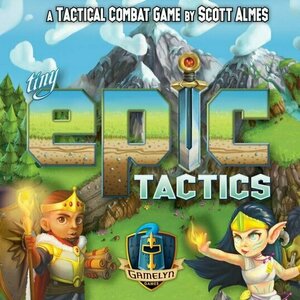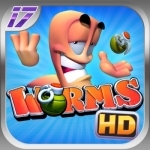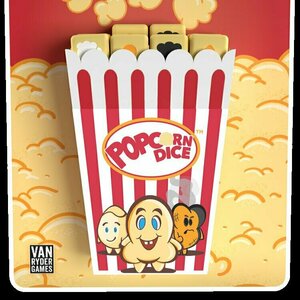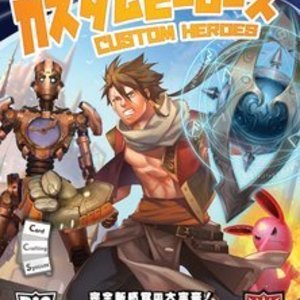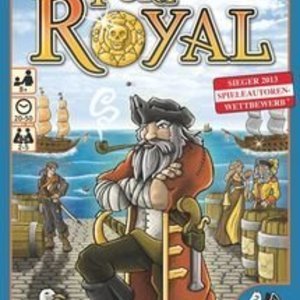
Nero Streaming Player
Photo & Video
App
Connect your iPhone to TV - fast, easy & ad free! Cast music, photos & videos to your Smart TV or...
Purple Phoenix Games (2266 KP) rated Tiny Epic Tactics in Tabletop Games
Jul 8, 2021
Disclaimer: There are 5 different modes of play in Tiny Epic Tactics. In this review, I will be focusing on the 2-4 Player Competitive mode. There are also expansions for this game, but this review will not cover those materials. I also do not intend to rehash the entire rulebook, but rather provide a general overview of the rules and gameplay. For a more in-depth look at the rules, pick up a copy of the game from the publisher or at your FLGS. -L
Tiny Epic Tactics is a game of strategy and combat in which players will lead their teams of 4 heroes to fight opponents and attempt to gain control of a number of areas in the realm. To setup the game, unroll the map scroll and place the boxes onto their corresponding spaces. Randomly deal each player 1 Unit card from each class (Fighters, Wizards, Rogues, and Beasts), and give them 4 Unit tokens (meeples) in their chosen color, as well as tracker tokens for Health, Ammo, and Mana. Players will select their 4-space starting location, and will place all 4 of their Units on the map. Shuffle the deck of Tactic cards, and deal 2 to each player. Players will look at the cards and select one to keep in hand, discarding the other. Place the Tactic card deck in reach of all players, and place the Control Card nearby, with the 3 Flag tokens on the Start space. The game is ready to begin!
Over a series of rounds, players will take turns performing actions until either one player has had all of their Units captured or one player has captured the final Flag token (based on player count). The remaining players will take one final turn, and then the game ends, VPs are tallied, and the player with the most VPs is the winner! A game turn is made up of four steps, the first of which being to check for Majority Control. To see if you hold a Majority Control over any of the Control Areas on the map, count the number of Units in each triggered Control Area – if your Units make up the majority of Units in that area, advance the corresponding Flag token on the Control card, and if you do not hold the majority, then nothing happens. Once a Flag has been advanced to the final space, it is given to the player who holds Majority Control.
The next step of your turn is to take up to 3 actions with your Units. Possible actions are: Movement, Melee Attack, Missile Attack, and Cast a Spell. All Units have a printed value on their cards for Movement, as well as either Melee Attack, Missile Attack, or Spell Attack value, based on the Unit’s class. All of these actions are pretty self-explanatory, with a couple of extra components – use of Ammo/Mana, rolling dice, advantages/penalties based on Elevation, etc. – that make the gameplay strategic and challenging. The third turn step is to remove Weakened tokens (more on this later), and the final step is to draw a Tactic Card. Look at the card, and either keep it in hand or discard it – you may only ever have 2 Tactic Cards in hand. Play continues in this fashion until the end of the game is triggered, either when a single player has had all 4 of their Units captured or a player has taken the final Flag token. All other players take one more turn and then VPs are tallied for final scoring.
Ok so first thing I want to talk about is the use of boxes to create a 3D map. It is SO COOL. It’s such a unique idea, and one that I honestly haven’t seen before. The added aspect of Elevation in regards to movement and range for attacks really ups the strategic gameplay for me. Want to climb to a higher peak? Ok, that costs +1 movement. Don’t have enough movement to climb up this turn? Then you’re outta luck. Your strategy must always be changing based on where Units are located on the map.
Speaking of strategy, there are several different game elements that you can base your gameplay on – there is no ‘right’ way to play! Maybe you really want to focus on getting Flag tokens, so you try to protect that area and maintain majority at all costs. Maybe you don’t care about the Flags and it’s all about combat to you – you’re on the hunt for enemy Units and Area Control means nothing to you. Or maybe your aim is to complete your Tactic Cards, which will then allow you to perform a special/bonus action upon completion. There are different ways to play this game, and that makes it engaging and entertaining as you must constantly adapt your strategy while trying to figure out how your opponents are playing too!
Another neat element of Tiny Epic Tactics is that on each turn you only have 3 actions – and a single Unit may only perform one action per turn! So you can’t just spend all 3 actions moving and attacking with the same Unit, they must be spread across all of your heroes. That adds to the strategy because you have to set your Units up in advance for certain actions, but must quickly adapt based on the movements of your opponents. You can have a Unit perform a second, different, action on the same turn, but it will then become Weakened. When Weakened, a Unit cannot perform any actions on the next turn, and will have the Weakened condition removed at the end of said turn. Or, on your next turn, you may choose to pay 2 Health to remove the Weakened token and be able to act in that same turn. It’s kind of a gamble – how far are you willing to push your Units, and are you able to sacrifice their abilities for an entire turn in order to removed the Weakened token?
Let’s touch on components for a minute. These components are great, as is to be expected of the Tiny Epic series. The art is colorful and unique, the boxes are sturdy, the cards are nice and thick, and the wooden components are quality. No real gripes from me regarding production quality of this game! The gripe I do have is about the gameplay – specifically a 2-player game. When playing a 2-player game in competitive mode, the game end is triggered after 1 Flag token has been secured. This really can negate any need for strategy or player interaction, because each player starts near a Control Area, and can simply just move there and camp out to take the Flag. In my first games at a 2-player count, I found the gameplay to be kind of bland and not engaging because of this. At higher player counts, you have to interact with opponents on the map as you try to capture Control Areas. If at a 2-player count, you were required to secure 2 Flag tokens, or maybe just mandate that the secured Flag must be the one located in the center of the map, it would encourage more interactions between the players, and thereby elevate the strategy and gameplay in my opinion. Just something to consider.
Overall, I think that Tiny Epic Tactics is a solid game in this series. It is not my favorite by any means, but the gameplay and mechanics fill a gap left by the other Tiny Epics. The strategy required can be high-level, but the simplicity of the physical gameplay makes it feel accessible and inviting to all types of gamers. If you’re looking for a great 2-player Tiny Epic, maybe keep looking, but for a 3-4 player game, Tiny Epic Tactics hits the spot. Purple Phoenix Games gives it a tactical 8 / 12.

Dream11 Fantasy Sports
Sports and Games
App
Welcome to Dream11 - the Official Fantasy Cricket Partner of Hero CPL T20 2017! Play single-match...
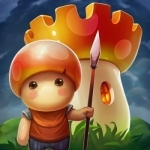
Mushroom Wars 2
Entertainment, Games and Stickers
App
One of the Best Games of the Year According to Apple In Mushroom Wars 2, tribes of feisty...

Counter Terrorist War - Sniper Shoot Strike
Games and Sports
App
Go! Go! Go! Classic Multi-Players FPS Games is coming. Anti-terrorist Sniper Team is the most...

AVStreamer - Remote Desktop + Movie/TV/Webcam Streaming
Productivity and Business
App
Remotely control your PC or MAC anytime, anywhere. Video streaming up to 30 frame per second with...
Purple Phoenix Games (2266 KP) rated Popcorn Dice in Tabletop Games
Aug 18, 2021
DISCLAIMER: We were provided a copy of this game for the purposes of this review. This is an advance retail copy of the game, so what you see in these photos is exactly what would be received in your box. For more in depth rules, you may purchase a copy online or from your FLGS. -T
Popcorn Dice is a very light dice chucker where the winner is the player with the most amount of points at the end of the game. Setup could not be simpler: place all the dice in the popcorn bucket and pass it to the starting player. Done. Let’s make some corn!
The active player shakes up the popcorn bucket and then dumps out the dice on the play surface (I would normally use the word “table,” but we have actually played this on many different surfaces). Every die face showing the golden kernel icon is placed back in the bucket: it’s not fully popped yet. All dice showing the single Pop! icon is placed in the player’s score pile to be counted later. Each Burnt dice face showing can be countered with one Double Pop! icon, with both dice being placed back in the cup. If there are no Burnt faces, then the remaining Pop! and Double Pop! dice can be placed in the score pile. However, if at any time four Burnt dice are unable to be canceled with the Double Pop! then the turn is over and ZERO points are scored. Similarly, if no dice (upon a subsequent re-roll) are moved to the score pile, the turn is over, but the player may count up their score pile dice. The active player may continue rolling as many times as they wish or are forced to stop due to unwanted dice rolls. The first player to 30 points signals the end of the game. Every player continues the round so each takes the same number of turns, and the player with the most points wins!
Components. This game is a plastic bucket in the shape of old timey popcorn buckets and a pile of dice. The bucket is nice and very sturdy, and the dice are great! They are big and chunky (like the size of King of Tokyo, if memory serves) and the icons are mostly clear. I say mostly because The Double Pop! and single Pop! icons are white ink on off-white colored dice. They can sometimes be hard to distinguish, especially if playing under less-than-favorable lighting. Other than that, I totally dig the look and style of this game.
When I say that my son and I played this 23 times the first day we received it, I am not at all exaggerating. My kid LOVES Popcorn Dice, and it plays differently from other dice games. I was just expecting this to mimic earlier dice games like Martian Dice and Zombie Dice. Thankfully, this one is lighthearted enough for my children, and still keeps the adults very satisfied. And let me know if you ever accomplish The Perfect Pop.
It is so simple to play, and that’s the beauty of it. I’m talking 10 minutes with toddlers. When you need something super quick and easy, and maybe to bring in absolute gaming beginners, you cannot lose with Popcorn Dice. Have some youngsters tagging along with their parents to game night? Show them Popcorn Dice and watch them be entertained nearly the entire night trying to pop the best batch of corny goodness. If you need that one little game in your collection that can work in many many different scenarios, then consider adding Popcorn Dice to your collection. Grab your copy here: Popcorn Dice from Van Ryder Games.
Purple Phoenix Games (2266 KP) rated Custom Heroes in Tabletop Games
Feb 7, 2022
Custom Heroes is a fantasy/sci-fi-themed, customization, ladder-climbing, trick-taking card game for two to six players. In it players are using their hand of cards to win tricks (a la Tichu). The twist is that each card is able to be upgraded by using various Advancements that are added directly into the same sleeve as the base card. The winner of the game is they who amass 10 or more points and win a subsequent hand.
Before the first game after unboxing, all Character Cards will need to be sleeved. These Character Cards are numbered from 1-10 and come in six sets (one set of 10 cards for each player, at max player count). To setup the game, each player chooses a Player Screen to hide their resources and provide the scoring table. Shuffle the Character cards and deal each player a hand of 10 cards. For this review, I will be using the two-player rules. Players also begin with 1VP Token and 2 Power Tokens, along with an Ascended Form Advancement Card and Kodora Advancement Card. In a two-player game, players begin with three total Advancement Cards, as shown in the photo below. The rest of the VP Tokens and Power Tokens are placed (or thrown, in my case) on the table, and the remainder of the Advancement Cards are shuffled and placed in the bag to be drawn randomly throughout the game. The battle for tricks may now begin!
As with all (most?) trick-taking games, Custom Heroes is played over a series of rounds. However, Custom Heroes is played across three phases: Upkeep, Main, Scoring. During the Upkeep phase, the deck of Character Cards is shuffled and 10 cards are dealt to each player. On each player’s turn during the Main phase, they will decide if they would like to upgrade any card by sleeving Advancement Cards along with the Character Cards. These Advancement Cards are clear plastic and will alter the value of the card, provide special abilities, or provide modifiers to the card’s value. Sleeving new Advancements may be done at any time during the turn, before playing it, but the caveat is that ALL cards are shuffled and dealt to players after every round, so the chances of receiving that same card in future hands diminishes with each additional player at the table!
Once Advancements have been applied, or whilst applying, the players will determine the lead play. A lead could be a single card or several matching cards in a set. The following player will need to play a card, or cards, of the same number, but of higher value. For example, if a single 7 was led, only a single 8, 9, or 10 will beat it. However, if a pair of 5s was led, a pair of 6-10 will beat that lead. Players may pass if they cannot, or choose not to, beat the current trick, and can engage in play on a future trick. Once a player has run out of cards for the hand, or all players have passed. The first player to run out of cards, or the last player to play a card, wins the hand and receives the benefits listed on the scoring table shown below. Again, when a player earns 10 VP and wins a hand, they win!
A few notes about Advancement Cards. The Ascended Form card given to all players at setup will allow the player to win the trick for that round once played. It is essentially a wild insta-win card. That is, unless another player plays an Ascended Form on top of it and wins with the most recent Ascended Form. The Kodora card, however, can be played to the player’s tableau instead of as a card in a trick. When played this way, the player “bets” two VP Tokens that they will win the hand. If they do, they gain an additional two VP Tokens, but lose their bet if they do not finish in 1st Place. All other Advancement Cards may be added to the Character Card sleeve as long as the associated gem icon at the bottom is not already present in the sleeve. As there are four gem slots on Character Cards, each Character may be upgraded four total times.
Components. This one comes with a number of components of different types. The tokens are all small, but not too small, the bag is cool, but obviously the main attractions are the clear plastic cards and sleeves common to the Card Crafting System that AEG produced. I think I first saw this idea of layering plastic cards on top of one another in the Gloom series, though it may have existed even before that. I adore this idea and really fell in love with it when I was big into Mystic Vale, also from John D. Clair and AEG. So components for me get a big ol’ seal of approval. I love ’em.
Similarly, I think the gameplay gets a big seal of approval from me. Like I said, I was big into Mystic Vale for a while, but I think that Cusom Heroes, to me, trumps it in many ways. Though both boxes mention games approximately taking around 45 minutes, I found Mystic Vale to be much longer, mostly due to having to explain and re-explain rules and oddities to players at the table. It feels like Custom Heroes has cut down the complexity of gameplay, especially for newer gamers. I can bring out Custom Heroes and have it taught and played in under an hour – a feat I still haven’t mastered with Mystic Vale.
I think that I also prefer the trick-taking style of Custom Heroes a bit more. My family really enjoys playing Euchre at family reunions and other events, and while Custom Heroes isn’t a Euchre clone at all, the feel is very similar. There is still a led card, and cards that are more valuable to be played atop them in order to win tricks. While there isn’t necessarily any suits in Custom Heroes, the ability to trump an entire hand with an Ascended Form Advancement or other Advancements adds a layer (see what I did there) of strategy and tactics that is just so satisfying. I am a big fan of games that allow players to upgrade their starting resources, or level up their characters, and this one fits right inside a little 60 minute pocket and is relatively easy to teach and play.
All in all, I am so glad I found this one at my FLGS (well, not super local), and there was a big sale going on. I picked it up solely for the Card Crafting System logo and it was a big hit for me. This will completely replace Mystic Vale for me in my collection, and I couldn’t be happier with that. If you are looking for something quick, easy, but full of choices and modifications, this is certainly the game for you. It’s the game for me, and that’s why Purple Phoenix Games gives Custom Heroes a mostly-upgraded 5 / 6. Could this reach into my Top 10 someday, or earn a Golden Feather Award? It is entirely possible. We shall see with more and more plays. I am excited to give it many more plays and find out! Are you in?
Purple Phoenix Games (2266 KP) rated Port Royal in Tabletop Games
Jun 12, 2019
Port Royal is the central hub for trading and commerce in the kingdom. Ships from distant countries come in to trade, and crew-members-for-hire wander the docks looking for work. Do you have what it takes to make a name for yourself in this bustling port? Put your bargaining skills to the test to find out!
DISCLAIMER: There are several expansions to this game, but we are not reviewing them at this time. Should we review them in the future we will either update this review or post a link to the new material here. -T
Port Royal is a card drafting game of press-your-luck in which players are trying to amass 12 or more Influence Points. Each turn is played in two phases: the Discovery Phase and the Trade and Hire Phase. During the Discovery Phase, the active player draws cards one at a time to create the Harbor for that turn. The cards revealed will either be Characters, Ships, Missions, or Tax cards. The active player can draw as many or as few cards as they would like, with one catch – if you reveal a ship with a flag matching one already in the Harbor, the turn is a bust and all cards are discarded! Think wisely before trying to push your luck when creating the Harbor! If you’re too risky, you could bust, but if you play it too safe, you won’t have many card choices for the next phase. During the Trade and Hire Phase, players interact with cards in the harbor. The number of cards players can take depends on the number of different ships in the Harbor. Players can hire characters by paying their hiring cost in gold, can discard ship cards and collect gold for performing a “trade,” or can complete Mission cards if they have the required symbols on their hired cards. The Discovery Phase is performed by the active player alone, but the Trade and Hire Phase can be performed by each player, in order, after the active player. If you decide to act on another player’s turn, you must pay them one gold coin. The game ends at the end of a round in which one player has amassed 12 or more Influence Points, collected from Character and Mission cards. The player with the most points wins!
One thing that I really like about Port Royal is that it’s a competitive game, but not a confrontational game. Besides paying to act on another player’s turn, there’s not a lot of player interaction, and as someone who can get pretty competitive, I really appreciate that. Yes, we are competing against each other, but with so little interaction, I’m more focused on my own strategy and cards than I am in trying to sabotage my fellow players. Another thing I like about Port Royal is the push-your-luck aspect of the Discovery Phase. I like it more than other push-your-luck games because all decisions are made by the active player – you’re not having to bluff or directly compete with another player when drawing your Harbor cards. It’s still a game of chicken, but against yourself. There’s still the element of push-your-luck, but it feels a little more safe than nerve-wracking.
All that being said, what I don’t like about Port Royal is the actual gameplay. Since there’s so little player interaction and the entire Discovery Phase is performed by one player alone, it feels like there’s a bit of downtime. Unless you’re the active player, you only get to act during half of every turn, so time is spent just sitting and watching other players. It ultimately all comes down to how quickly everyone performs their turns, but there’s just not a ton of engagement in my opinion. Don’t get me wrong – it’s a neat game. It just feels a little boring to play sometimes. It also takes some time to build up momentum to successfully execute a strategy. Everyone starts with 3 gold coins, but most cards cost more, and depending on when you get to act in the Trade and Hire Phase, any cards you could have afforded may already have been taken. So it might take several rounds before you’re able to really begin implementing a solid strategy, with the first few rounds just being a card-grab.
For the most part, I enjoy playing Port Royal. It’s mildly strategic, but the lack of interaction can make it feel a little stale sometimes. It’s not a game I pull out every single game night, but it’s one that I would most likely play if someone suggested it. Purple Phoenix Games gives Port Royal a buccaneer’s 7 / 12.
https://purplephoenixgames.wordpress.com/2019/04/16/port-royal-review/
